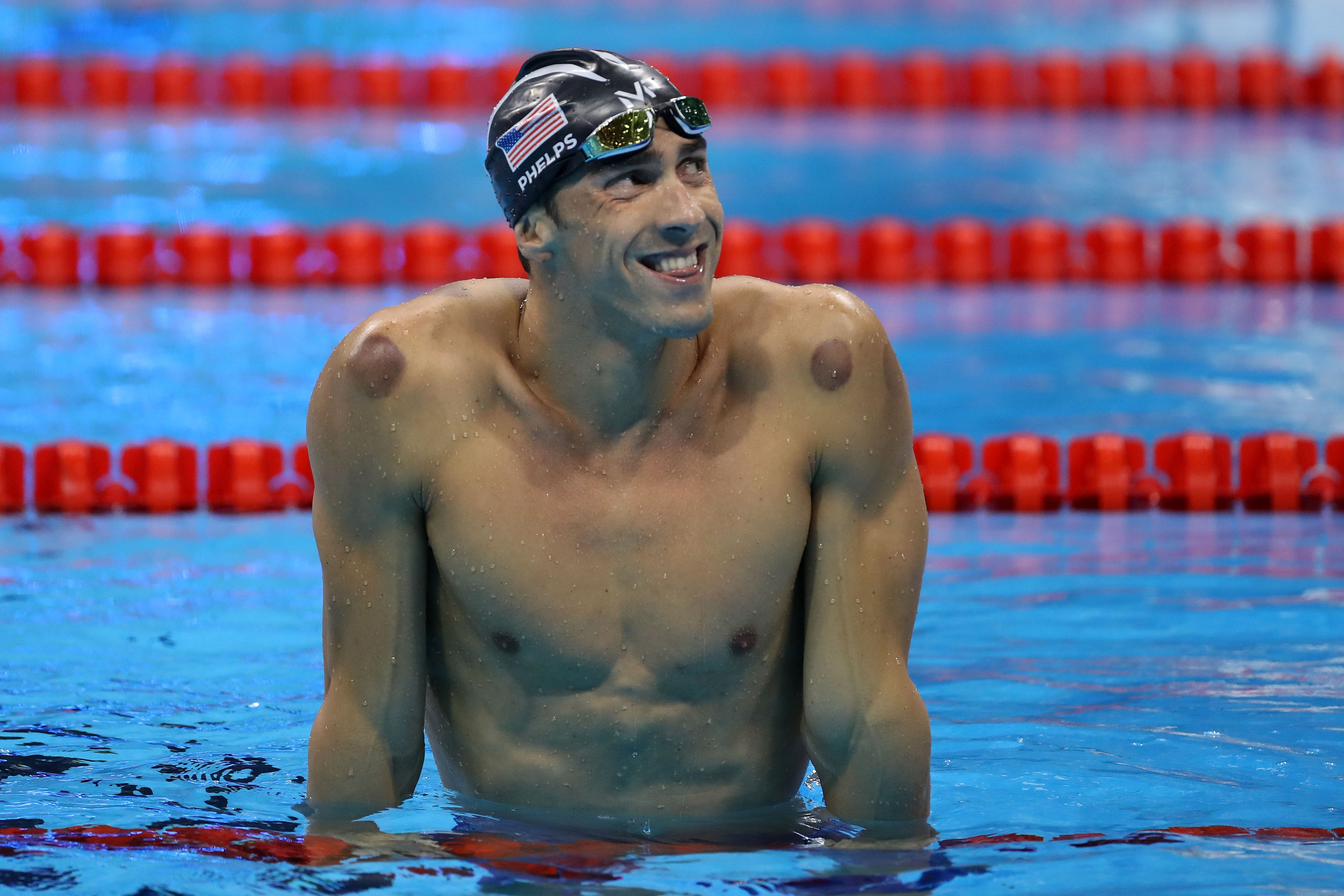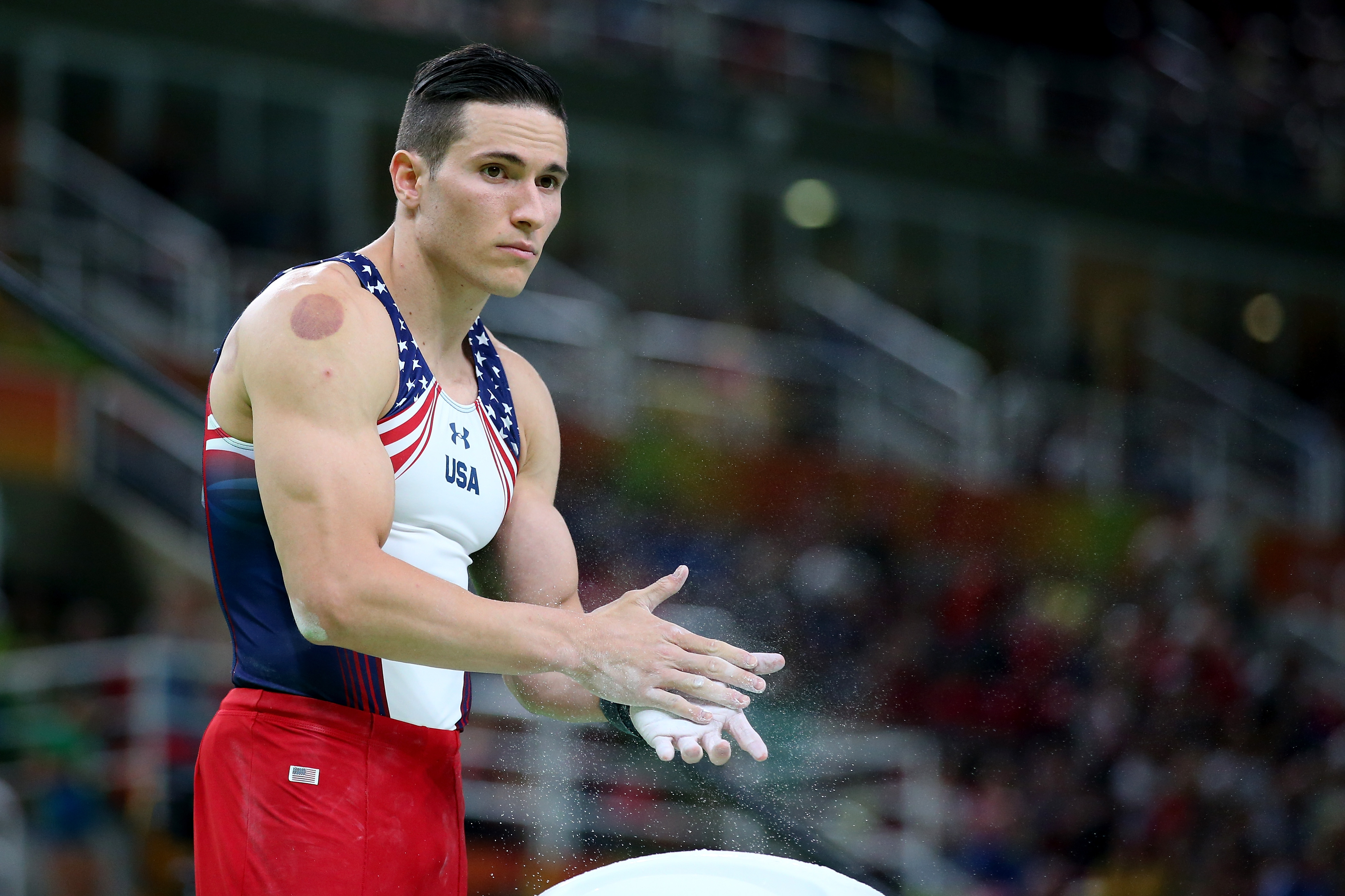If you’ve been closely following the Olympics or seen your favorite celebrities on the red carpet, you might have noticed something peculiar—large dark red circles on their bodies, particularly on their backs and shoulders. These marks, which may look like bruises, have caused a lot of curiosity among fans and viewers alike. So, what exactly are these circles, and why are they becoming increasingly common among athletes and stars?
In this article, we’ll uncover the reason behind these distinctive marks, explore the ancient therapy that causes them, and explain why high-performing athletes and well-known celebrities swear by this practice.
The Mystery Behind the Red Circles

During major events like the Olympics, some athletes—swimmers, gymnasts, and even track stars—are often seen with large, symmetrical red spots across their bodies. Celebrities, too, including Jennifer Aniston and Gwyneth Paltrow, have been spotted with these unusual marks. While they may appear alarming, they’re actually the result of a traditional healing practice called cupping therapy.
Cupping therapy, an ancient technique rooted in Chinese medicine, has gained immense popularity in recent years, especially among athletes. But what exactly is cupping, and why has it become so widespread among the elite?
What Is Cupping Therapy?
Cupping therapy involves placing special cups on the skin to create suction. The suction pulls the skin and underlying tissues into the cup, stimulating blood flow to the area. This increased circulation is believed to promote healing, relieve muscle tension, and improve overall performance.
The therapy works by drawing blood toward the surface of the skin, leaving behind the telltale circular red marks that are often mistaken for bruises. These marks, though striking, are not painful. In fact, they are a sign that the therapy is working to relax muscles, alleviate pain, and promote recovery.
The practice of cupping dates back over 2,000 years and has been used to treat a variety of ailments, from muscle stiffness to respiratory issues. While it originated in China, cupping has spread across the world and is now a common recovery tool used by athletes and health-conscious individuals alike.
Why Do Olympic Athletes Use Cupping?
Athletes at the highest level, such as those competing in the Olympics, put their bodies through intense physical strain. Swimming, gymnastics, and other sports require rigorous training, which can result in sore muscles, tension, and overuse injuries. Cupping therapy has emerged as a popular method for athletes looking to recover faster and relieve sore muscles.
For example, American swimmer Michael Phelps, one of the most decorated Olympians of all time, was frequently seen with cupping marks during the Rio 2016 Olympic Games. Phelps, along with other athletes, swears by cupping therapy, attributing it to his ability to recover quickly between races.

Other athletes, such as gymnast Alexander Naddour, have also turned to cupping for relief. Naddour stated that cupping was one of the best recovery techniques he had ever used, especially after long days of training.

How Cupping Therapy Works
The basic principle of cupping therapy is that by creating a vacuum, the cups pull the skin and underlying tissues into the cup. This process is thought to improve blood circulation, which helps to relieve pain and accelerate healing. The cups can either remain stationary on the skin or be moved around to massage the area.
Cups can be made from a variety of materials, including glass, bamboo, or silicone. The suction is traditionally created by using heat, but modern cupping often uses air pumps to generate the vacuum. The treatment typically lasts between 10 and 15 minutes, and while it might leave behind the iconic red circles, most users report little to no discomfort.
Athletes who use cupping therapy claim that it helps alleviate soreness, reduce inflammation, and promote faster recovery, allowing them to maintain high levels of performance without downtime.
Celebrities and Cupping: From the Red Carpet to Wellness

It’s not just athletes who are embracing the benefits of cupping—celebrities have been spotted with cupping marks for years. Actress Gwyneth Paltrow famously walked the red carpet at the 2004 premiere of Anchorman with visible cupping marks on her back, sparking widespread interest in the practice. Since then, stars like Jennifer Aniston have been seen with similar marks, showcasing their commitment to wellness trends.

Cupping has become a favorite among Hollywood’s elite, as it is seen as a natural and non-invasive way to maintain physical health and appearance. Many celebrities turn to cupping for its supposed ability to reduce stress, improve circulation, and promote overall well-being.
The Science Behind Cupping
While cupping has gained popularity for its potential benefits, the scientific evidence supporting its effectiveness remains limited. Some studies suggest that cupping may help with conditions like chronic pain or muscle stiffness, while others attribute its effects to the placebo effect.
Despite the lack of definitive scientific proof, athletes and wellness enthusiasts continue to use cupping as part of their recovery routines. Many users report feeling relaxed and rejuvenated after a session, even if the marks left behind are temporary and purely cosmetic.
Is Cupping Safe?
For the most part, cupping therapy is considered safe when performed by trained professionals. The main side effect is the temporary red or purple circles left on the skin, which usually fade after a few days. Some people may experience mild discomfort during or after the treatment, but serious side effects are rare.
It’s important to note that cupping should be done by a certified practitioner to avoid injury or skin irritation. Additionally, individuals with certain medical conditions, such as bleeding disorders or skin infections, should consult a healthcare provider before trying cupping.
The distinctive dark red circles seen on the bodies of Olympic athletes and celebrities are not a cause for concern—they’re a sign of cupping therapy. This ancient practice, rooted in Chinese medicine, has gained a modern following among elite performers who rely on it to relieve muscle soreness, improve recovery, and enhance their physical performance. Whether you’re a professional athlete or someone looking to explore alternative wellness practices, cupping therapy offers a unique approach to recovery and overall health.


